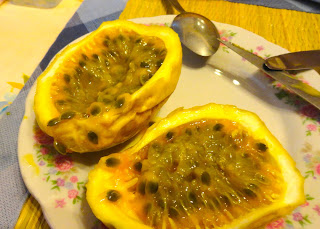As of Friday, I only have a month left of my study abroad! I know its not quite over yet, but it still has gone by so fast. Its so bittersweet...
But I realized, I really haven't written about Arica yet, apart from when I first got here and didn't really know what was going on.
So here are some photos that I like from this 'ciudad tranquila y chiquitita'.
Arica siempre Arica. Mayor es mi lealtad. "Arica always Arica. Great is my loyalty
My neighborhood, although the house isn't photographed here.
El puerto de Arica and filled with fishmen
Good morning to you to, lobo del mar.
La puesta del sol en la playa
Almost every person I've met here and talked to about Arica describes Arica as 'una ciudad tranquila y chiquitita' which means a calm and super small city. And it is. I walk everywhere here and never feel unsafe. Also, luckily since I have dark hair and tanner skin, I get a lot less "piropos" or whistles/yells from people on the street. The blond gringas have it a lot worse.
At the beginning of the semester of university here they have this tradition for the mechoneos, which are the first years in the university. In the first week of school there's a hazing of sorts that the mechoneos are pretty much forced to participate in. What happens is that one day during a first year class, the second years of that major will come in and herd out all the students, and the professor is okay with it, as its a tradition. Depending on the subject, the process varies, but usually the second years take the freshman out and make them take off their clothes, put a trash-bag on them, and throw at them fruit, milk, dirt, and other substances that you don't want thrown on you. Its also common for them to cut the first years hair or dye their hair a different color. Then for the rest of that day, these first years in trashbag that smell and look terrible have to walk around the city asking for money, because only after they've collected a certain amount of money can they get their clothes back. This money then goes to "la semana mechona" which is a week off about 3 weeks into the school year when classes are suspended and people party. I slyly took this photo of two mechoneos.

Trash bag, cut hair. These guys are lucky though; they got to keep their shoes.
Another thing that is different here about the school here is the culture of protests. For the last several years, the students in the universities have been fighting for free education. Currently in the university in Arica, the students are in "paro" which is when all classes are suspended as a effort to get the administration to listen to students. The impetus for "paro" this time round was because students were losing their scholarships. And if the administration doesn't respond soon they're going to 'invade' the school, which is like when they go into the offices all at once and make a ruckus. The whole mindset of the right to free education at the university level is something that has been super interesting to witness here, as I feel its completely different from how people in the US view education and respond to the problems in the education system.
Another thing I've been doing here is volunteering with an organization called "Un techo para Chile", which means "A roof for Chile". Un techo para Chile works with people who live in 'los campamentos', which is this area where people have constructed houses just out of pieces of plywood or tin or whatever they can find. So the majority of them don't have running water or electricity. "Techo" works to help them improve their living conditions, whether thats providing more material to help insulate their house, or tutoring the kids who live there in their school work. They also have events just to hang out, which has been a really awesome way to meet other Chileans.
Here's a view of one of the "Techo" meetings we had on the beach! It was fun but actually really cold.
Here's me giving an introduction to a "Dia intercultural" that our program, SIT, did with "Techo". We (we being the people in SIT) made different types of food from different places and got to share and talk to the people of the campamentos. We also had small, teaching conversations in English.
And now for food! Here are some pictures of a sampling of what I've been enjoying here in the desert.
Maracuya, which is passion fruit. The fruit itself is awfully acidic but the flavor is awesome. Maracuya ice cream, maracuya pie, maracuya mojitos. The flavor is very common and very delicious.
Locos con papas. Locos are a type of Chilean abalone which is an edible sea snail, according the dear Wiki. Its dense and tough but good. We eat it here with mayo... not my favorite addition but not terrible either.
Picante de mariscos. Mariscos, rice in a red sauce. Mmm
YOGUR DE COCO. My favorite yogur ever.
Two more random photos:
Reina, our dog, and Luna, the fat cat in the background.
Some cool graffiti I pass on the way to school. If you can't tell, this is on a corner. Graffiti Mouse is sneakily waiting around the corner ready to take down Graffiti Cat.



















































